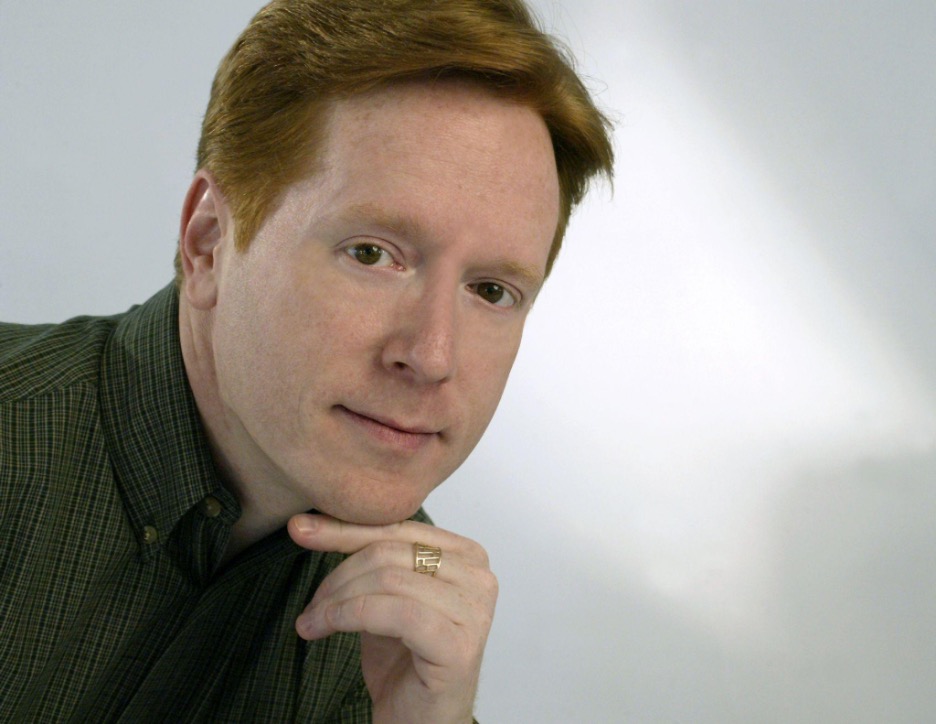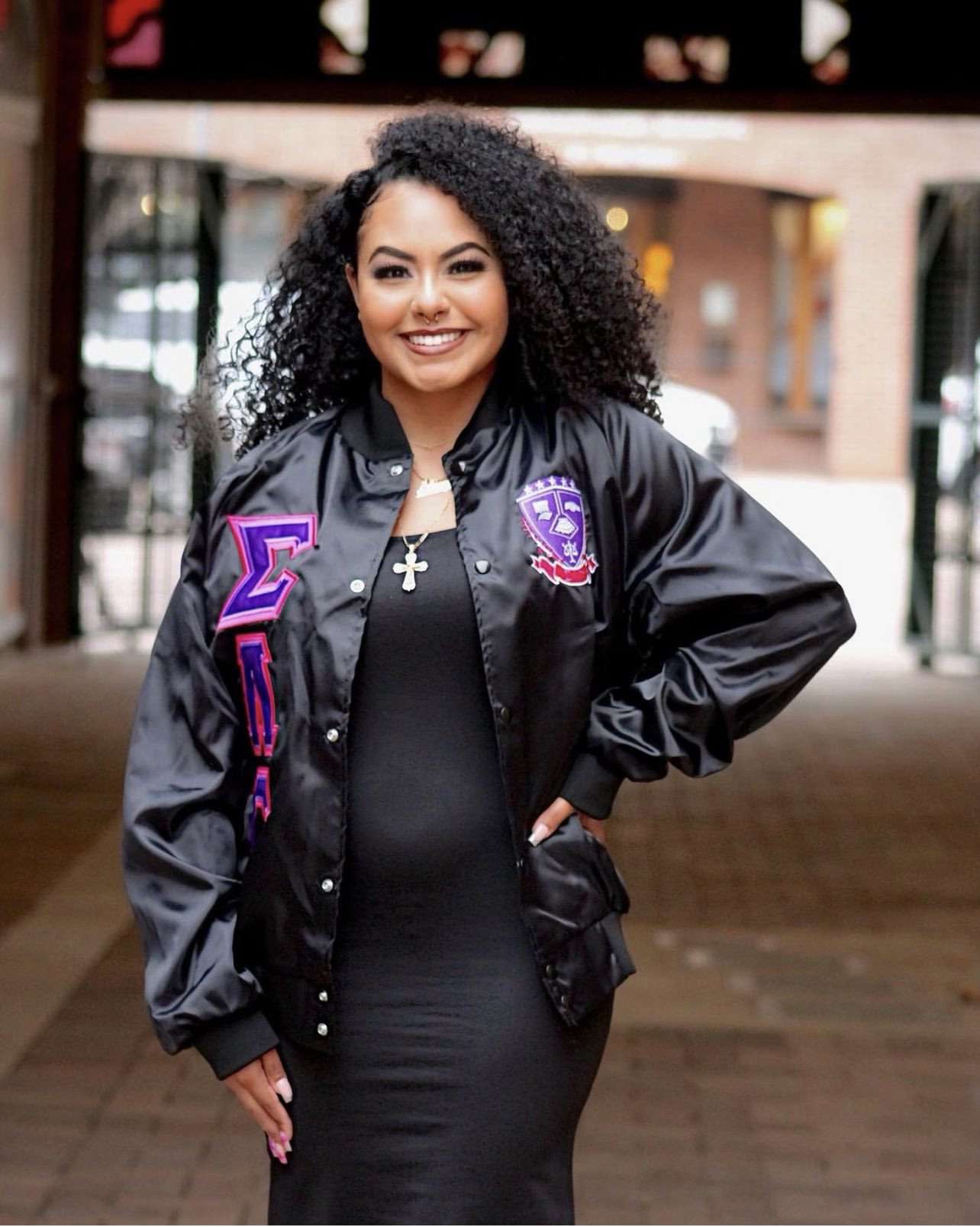
UNC Communication Studies' professor Thomas Endres talks about the creative process behind his new book My Costume, Myself: Celebrating Stories of Cosplay and Beyond (Kirk House Press, upcoming 2023). (Running time 16:19)
Transcript:
My name is Thomas Endres. I am a professor in the Department of Communication Studies and the coordinator for the leadership Studies Minor. I teach a variety of classes from our Unpacking Popular Culture course up through the senior capstone.
After going to comic conventions with his daughters, Dr. Endres was inspired to look at cosplay and costuming as forms of communication. He heard so many different stories from people in multiple communities that involve various forms of costuming and found so many stories that he is about to have a book published on the topic.
So what made you choose UNC?
I chose UNC over 20 years ago now. I had been living and teaching in Minnesota. I had a full career there. I was a tenured, full professor and head of several different departments there. But I was getting a little tired of the cold. And a job advertisement came up that there was a perfectly good department out here in Colorado, and I kind of had Colorado in my retirement plans.
But here early on was this really nice department that needed somebody to steer the ship. They needed a coordinator or a chair for the program. And so I applied and here I am.
So what made you want to study and teach communication?
It's always been a passion of mine. When I was an undergraduate. I knew that I wanted to be a teacher. I wasn't entirely sure what it was I wanted to teach. I was more interested in teaching life lessons and efficacy and becoming a good person. And so I thought, Well can I do that via English? Can I do that via history?
And I was involved with theater at the time, and through that met a lot of people on the speech and debate team. And through that forensic activity, I found the Department of Communication there and that became my passion.
So have you like have you always been teaching? Um. Sorry. Where did you get your start teaching?
Well, this is now my 42nd year in the classroom. I started as a graduate teaching assistant, actually as an undergraduate because I got a secondary ed license. So I did my student teaching in Minnesota, and then I went on for my first master's degree at the University of Illinois in Champaign-Urbana, where I started teaching public speaking. From there, I moved to the University of Minnesota for my Ph.D., where I taught their small group communication course, and that moved on to my various teaching jobs in Minnesota and eventually my moving out to Colorado. So 42 years in the communication classroom.
That's a long time.
How long were you researching cosplay and communications?
Well, the first interview we did was in October of 21, and I am just now finishing up the proofreading of the final draft of the book. So it's been quite a while.
When will your book be out and what is it called?
The book is called My Costume, Myself: Celebrating Stories of Cosplay and Beyond. It's slated to be released in May. Hopefully, it will come out a little bit sooner, but I'd like to have it in May so that I can take it to the author's alley at the Denver Fan Expo in early June.
What inspired you to look at costuming and cosplay through a communication lens?
In all of my communication studies, my focus has been on rhetorical communities. That is, communities that are bonded not necessarily by geographic locale, but by the stories that they share, by the rhetoric, by the persuasion that holds them together. And I've looked at a variety of different communities over the years from father-daughter relationships to single moms and their perspectives on the world.
And I started moving into a kind of disenfranchised communities that maybe didn't have a voice, didn't have a chance to have their stories told. So 20 years ago, I published a book called Sturgis Stories that was about the people that went to the world's largest motorcycle rally. And as I started going around and doing a tour about that book, I noticed a lot of people were asking me questions about the participants who were heavily tattooed.
This was long before L.A. Ink and TV shows like that, and that led to a whole new prong of study where I started to look at tattoo communities. Well, when that reached its kind of end, I was looking for some new community that I wanted to study. And at the same time, I started going to Comic-Cons with my daughters.
We've always been kind of superhero nerds, and I thought it would be kind of fun to go. And what amazes me most about the community is that I saw everybody there I mean, I saw families, I saw individuals, young people, old people, people with disabilities, and individuals who quite honestly, during my high school days, probably would have been bullied.
Now, finding a place that they can go and have a home and to celebrate and experiment. And I just thought this is just such a neat, inclusive community that became the springboard for this eventual project.
Did you look at like the online communities as well for cosplay and stuff?
Less so for a couple of reasons. One, it's a constantly moving target. If you go to some of you do a Google search and then you go to the websites, a lot of them are inactive or haven't been updated for a very long time. And the other thing is they already have a presence. They already have some form of articulation available to them. I wanted to talk to people who otherwise wouldn't have their stories told.
That's super interesting. So, like you went to I'm just going to ask a little bit like break down sort of how you studied it since it is going to like Comic-Con.
Well, a lot of this stemmed from a spring 2022 sabbatical. I had one semester off and my original plan was to go specifically to Comic-Cons, something like Fan Expo, do some interviews, do some photographs there, and maybe get an article or two about cosplayers. And that was going to be it in a nutshell. But the more I looked and the more I talked to people, the more the project took on a life of its own and it started to expand.
So instead of being a one-semester study producing an article about cosplay, it became an almost two-year project where my wife and I traveled around the country interviewing people and taking pictures, and looking at costume in all of it’s various forms. So we look not only at cosplay, but we look at things like celebrity impersonation, historical reenactment, drag, professional wrestling gear, roller derby, Renaissance festivals, live-action role plays, society for creative anachronism.
It just it went on and on and on, and we just kept finding more subsets to the community that we wanted to experiment with or talk about. And that's how it ended up being a 380-page book as opposed to a simple 20-page research article.
Awesome. I've never thought because I've been playing roller derby since I was 14. Never thought like the costuming. Like I know that there are lots of costumes involved in it, but I never thought that it'd be sort of like a subsect of that.
Well, I actually kind of invented a word for that in my book, and I call it Uniplay. So instead of cosplay, we're just playing with costumes, unit players playing with uniforms. In roller derby, you're mandated to have certain things. The letters on your jerseys have to be a certain size. The jammers headgear has to match the jersey color.
I mean, so there's rules. But beyond that, what you do with adornments and what you do with makeup is all a personal choice. It's you having an opportunity to play with your uniform.
So I'm about to be doing a lot of talking. But just for a sec, because I could talk about roller derby for hours and thinking about it in terms of what Dr. Endres is talking about, various pieces of our uniforms can be critical for communication and playing and letting us know who people are. So here's my little breakdown of this.
There are five players from each team on the track, therefore blockers and the jammer. The jammer wears a helmet cover with a star on it. And that little piece of fabric communicates with the blockers as well as the refs who they should be looking out for. I also have a quick example of what he's talking about with uniplay.
My team has an event called the Black and Blue Ball, where players dress up in dresses and play all dressed up. It's super fun and it's supposed to emulate prom. Everybody puts so much effort into their looks and always looks amazing, but they also make sure that they're following guidelines by making sure that the numbers on their back are big enough since the guidelines are there for a reason.
I think it's a perfect example of uniplay, but it's still making sure they're following uniform guidelines.
Yeah, I've definitely seen that with a lot of like different people on my team. I know that for one year for like the championship game, my coaches, I do this like healthy black makeup and we're going to look so cool and we're going to go out and we're going to intimidate them. But I don't think it really intimidated them. But it looks cool and it was fun
and it's fun.
Exactly. Like that's the main fact.
Can you tell me a little bit about your other communication research with like other groups?
Well, again, I look at different communities and the voice that they have. So I have looked at single moms and the fathers and daughters that I've already talked about. I've looked at religious communities, Laity in the Catholic Church. I've looked at public relations campaigns. For example, an organization like the Knights of Columbus and how they dealt with the country's Quincentennial campaign.
When Perspectives on Columbus had changed and how they had dealt with a public relations fiasco. So I'm looking at stories and I'm looking at how they persuade people and where they take us and where they pull us together and where they divide us.
Yeah, that's very interesting. I think we don't really fully see the communication behind it as well as what all goes into it. Because PR and communication are big things that do a lot of like damage control and stuff like that. So is that what you sort of found?
A lot of it. And then I also like to impart the lesson and anybody who's listening that has been in any of my communication or my leadership classes will remember this phrase. The person who tells the best story rules the world.
What does that mean?
It's all about storytelling. It's all about catching people up in your dramas, having a shared sense of heroes, a shared sense of villains, and a shared sense of the sanctioning agent, or the rationale or the justification that underpins your story. Are you doing this for God? Are you doing this for democracy? Are you doing this for… What is your reason?
A lot of the sanctioning agent that exists in the costume community is we do it for identity, we do it for representation of self. We're finding that a lot of people are using costume as a way of exploring otherwise unarticulated aspects of their personality. They're letting things that are inside them come out via the costume. So the sanctioning agent is my internal needs, my my internal personality, my internal orientations. That normally don't get to see the light of day, and suddenly now they are empowered.
So would you say that cosplay and costuming has has a big impact on marginalized communities?
I think it has a huge impact. It's extremely transformational it creates, for the most part, a relatively safe environment. Sometimes the worst enemy that a cosplayer encounters is another cosplayer. You know, some people picking on you within the community, but for the most place, it's a very inclusive environment where you get a chance to test-drive aspects of your personality that maybe you just wouldn't do out on the street. And after there, find what your levels of comfort might be.
What was the main cause I know that you went to? A lot of conventions and stuff like that you mentioned. So what were like the main people that you talk to like, I guess like what type of cosplay did they do?
It really depends. My wife tells me that I have a good eye for stories or a good nose for stories or whatever. We would go through these conventions and people would walk by and it'd be like, swipe left, swipe left, you know? Nope, nope, nope. That's not the story I'm not getting. And then somebody would walk by and I'm like, Wow, that's the person you can just you just see it emanating off them.
There's something there that they need to talk about. I mean, sometimes it was really obvious. For example, one of my favorite stories in the book is a young woman named Samantha Nord, and I actually encountered her at an early con. She ran by me real quickly wearing a Wonder Woman costume with a bustier. And with that costume, you could tell immediately that she had a physical deformity, her arms hadn't developed, and so her hands were essentially coming out of her shoulders.
I'm like...Oh, this is a story I want to hear! So I ran and caught her gave her my contact information. We and we contacted them The next year, when I finally got a chance to do an interview with her. And on the day that we did the interview, she modeled a couple of different costumes for me. But the one that's really highlighted in the book is she does Lady Deadpool.
So for those who don't know the character that she's dressing up as, Deadpool is a character from the Marvel Universe, that is also kind of a spin off of the X-Men series.So, yeah, just thought I’d add that in there.
And the reason she selects a Deadpool character. For those who don't know the storyline, haven't seen the movies, Deadpool is a hero that regenerates and in the movies, it's used to comic effect. You know, Ryan Reynolds gets his legs blown off and then we have a lot of fun watching them walk around on these little baby legs for a while.
Well for Sam, she puts on the Deadpool costume. She wears a pair of severed arms hanging from her belt. And it looks then like her arms are regenerating back out of her shoulders. It's just it's such a brave statement and it's such a wonderful and empowering statement. And, you know, in our talk, she told me about how the world is not designed for her and her disability.
You know, there's Braille everywhere. There's sign language for the deaf. There are ramps for people in wheelchairs, but there's nothing for people whose arms are coming out of their shoulders. Just, you know, bathroom equipment is not geared for her. Doors are not geared for her service dogs, which she could probably benefit from, are not geared for her because they don't know how to train one for her particular disability.
So when she puts on this Deadpool costume and goes to a Comic-Con and is surrounded by people who think that what she is doing is so cool and such a great costume, she told me for the very first time in her life that she ever felt like she really belonged somewhere. And those are the kinds of stories I want to tell.
That's awesome. I think that's super cool, especially in like communities that aren't fully represented, especially in the media. I think that's like cosplay from what I've seen, has been a very helpful medium for them as well as like telling stories and like characters and stuff like that.
If you could do a podcast, what would it be?
Actually, it would probably be something that I don't do at work because I do enough work at work. My side hobby is buying, selling and collecting vintage toys from the fifties and sixties, So I would probably do a podcast on things like that, like how to make sure you're not buying fake red-line Hot Wheels that people say are worth something when they're really not or original in the box GI Joe’s how to tell that they're real or fakes. It would be a podcast like that.
I think that would be super cool. I think there's definitely a market for it and also it kind of goes hand in hand with the cosplay as well as like conventions.
It all basically says that I'm just a big kid at heart.
Yeah, which I mean, there's no problem with that at all.
Not at all.
Thank you for listening to Dr. Andrews talk about his process of researching cosplay and costuming as a form of communication. Seem like a long process but will be worth it once his book is published in May. I'm your host, Isabella Marcus-Porter giving you a taste of UNC.





